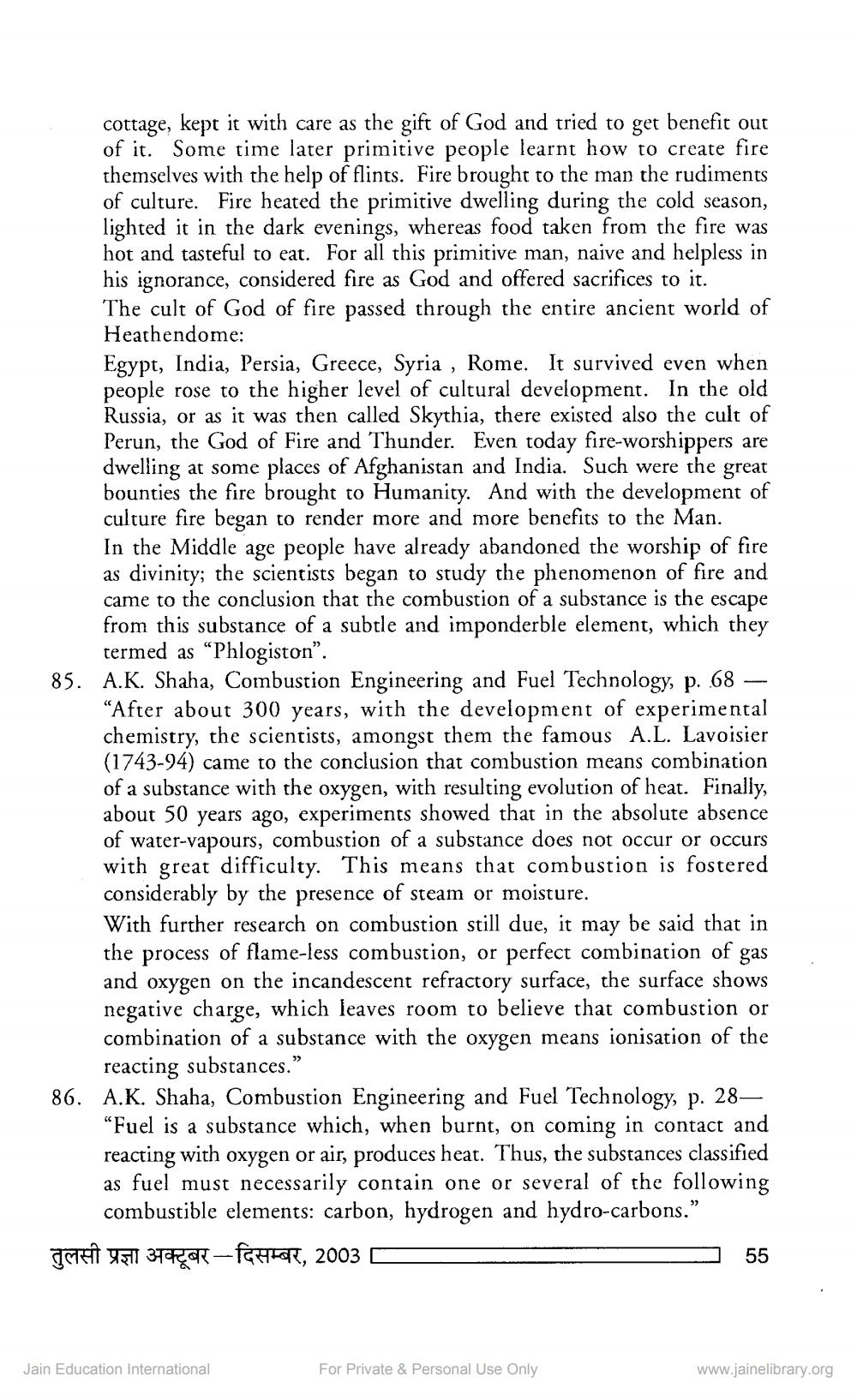________________
cottage, kept it with care as the gift of God and tried to get benefit out of it. Some time later primitive people learnt how to create fire themselves with the help of flints. Fire brought to the man the rudiments of culture. Fire heated the primitive dwelling during the cold season, lighted it in the dark evenings, whereas food taken from the fire was hot and tasteful to eat. For all this primitive man, naive and helpless in his ignorance, considered fire as God and offered sacrifices to it. The cult of God of fire passed through the entire ancient world of Heathendome: Egypt, India, Persia, Greece, Syria , Rome. It survived even when people rose to the higher level of cu Russia, or as it was then called Skythia, there existed also the cult of Perun, the God of Fire and Thunder. Even today fire-worshippers are dwelling at some places of Afghanistan and India. Such were the great bounties the fire brought to Humanity. And with the development of culture fire began to render more and more benefits to the Man. In the Middle age people have already abandoned the worship of fire as divinity; the scientists began to study the phenomenon of fire and came to the conclusion that the combustion of a substance is the escape from this substance of a subtle and imponderble element, which they
termed as “Phlogiston”. 85. A.K. Shaha, Combustion Engineering and Fuel Technology, p. 68 —
“After about 300 years, with the development of experimental chemistry, the scientists, amongst them the famous A.L. Lavoisier (1743-94) came to the conclusion that combustion means combination of a substance with the oxygen, with resulting evolution of heat. Finally, about 50 years ago, experiments showed that in the absolute absence of water-vapours, combustion of a substance does not occur or occurs with great difficulty. This means that combustion is fostered considerably by the presence of steam or moisture. With further research on combustion still due, it may be said that in the process of flame-less combustion, or perfect combination of gas and oxygen on the incandescent refractory surface, the surface shows negative charge, which leaves room to believe that combustion or combination of a substance with the oxygen means ionisation of the
reacting substances.” 86. A.K. Shaha, Combustion Engineering and Fuel Technology, p. 28—
“Fuel is a substance which, when burnt, on coming in contact and reacting with oxygen or air, produces heat. Thus, the substances classified as fuel must necessarily contain one or several of the following
combustible elements: carbon, hydrogen and hydro-carbons.” DAEW YFII Stagere - fryka, 2003
55
Jain Education International
For Private & Personal Use Only
www.jainelibrary.org




